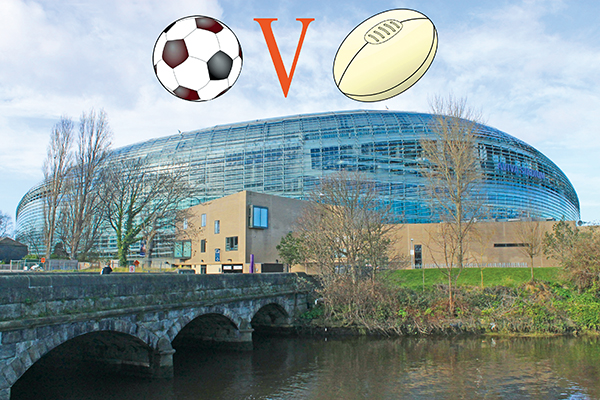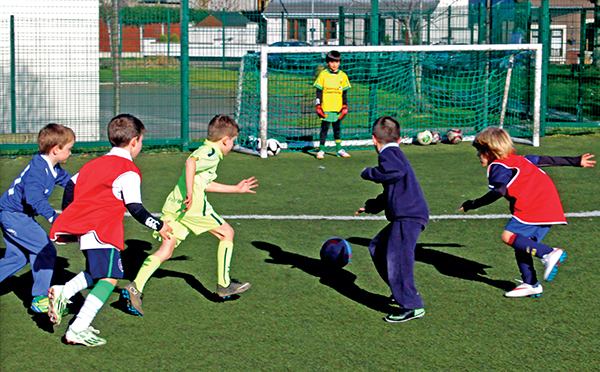
Now the Six Nations is behind us and the country is still reeling from a collective hangover, we at NewsFour decided to try to lay an old ghost to rest.
For many years now, our grand area of Dublin 4 has been firmly associated with the sport of rugby. In fact, someone who professes a love of the sport of the oval ball is often referred to as a D4 Head as a result. This is a devil that may well have to be demystified given the eclectic sporting traditions that Dublin 4 at large has to offer.
There are many people who feel that one of the residual side effects of the Celtic Tiger boom times has brought with it an inclination to the finer things of life. In our part of the globe, rugby has long been tied to prestige, private schools and the upper middle class.
There is an old saying about the difference between football and rugby, that “Football is a gentleman’s game played by hooligans, and rugby is a hooligans’ game played by gentlemen.” However, there are also those on the other side of the fence who would deem soccer to be a game of grace, skill and panache, whereas rugby is nothing more than organised thuggery!
Soccer has long been a proud tradition in Dublin 4, particularly in Ringsend and Irishtown, with such legendary names as Jimmy Dunne and Val Harris hailing from the area. Bob Fullam, Ringsend man and former Shelbourne FC great, also made history by scoring the first ever goal for the Republic of Ireland national football team.
Soccer clubs are also more prevalent in the area, with representation from Cambridge Boys Football Club, Bath Markievicz FC and a host of others.
The presence of rugby in these quarters seems to be limited. Contrast that with Ringsend’s neighbouring areas, which are replete with rugby clubs like Railway Union RFC, Old Belvedere and Wesley. On the surface, this would appear to reflect a sort of class divide but further investigation may yield an alternative answer.
Another split down the middle comes from the Aviva Stadium itself. It would clearly be too difficult to determine whether or not rugby or football trump each other, given the crowds on match day and that the stadium is the central sporting hub of Dublin 4 in general.
Lansdowne Road had previously been solely owned by the Irish Rugby Football Union, but the current stadium is controlled by the IRFU and the Football Association of Ireland as a joint venture known as the Lansdowne Road Stadium Development Company.
NewsFour sat down to chat with Alex Cordero, manager of Slattery’s pub in Ballsbridge to ask him for his thoughts. The pub was chosen by Guinness to front their Rugby Country campaign in 2009. Although seen largely as a “rugby pub”, Alex stresses that commercial considerations take precedent, rather than the so called sporting identity of the bar.
“We set ourselves up to be the best rugby pub in the country,” Alex said. “But we’ve always been into soccer. There’s a commercial element to what you show, of course. Maybe after the Guinness Rugby Country campaign it was seen as rugby-centric but it wasn’t always like that.”
Slattery’s could well provide a more accurate picture of how the football-rugby debate is defined in Dublin 4. Ultimately, the Irish rugby team is far more successful than their soccer counterparts and there is more of a drinking culture associated with the former. Throw in the bandwagon effect with the history of rugby in the area and you have a recipe for a potentially over-exaggerated reputation!
Slattery’s, despite being seen as a rugby pub, is actually the very place that Shelbourne FC started, where the original founders signed the papers for the club.
The pub also has a sponsorship based relationship with YBIG, the country’s largest soccer fan forum. The crowds in the pub are quite varied, with Champions League nights featuring many Germans, French and Portuguese popping down from Google, but with larger crowds in general setting up shop for rugby events.
“We would probably make 20 to 25% better when the rugby is on,” Alex said. “If we had a top 20 soccer team, income from those home and away games would be better.”
Overall, it would appear that the relationship between rugby and soccer in Dublin 4 appears to be based on team success and the inevitable financial rewards that pubs receive, rather than the area’s reputation as a modern sphere of affluence. Even on websites like Lovin’ Dublin, which feature the go-to-sports pubs, Dublin 4 establishments are represented on the same level as outside bars.
Perhaps when the Irish soccer team decides to get its act together, we shall be able to decipher whether or not there is a conclusive answer to this far-reaching question, but time will tell whether or not this clash of the titans can ever be resolved conclusively!
By Craig Kinsella

Above: Local kids enjoy football at Irishtown Stadium.



